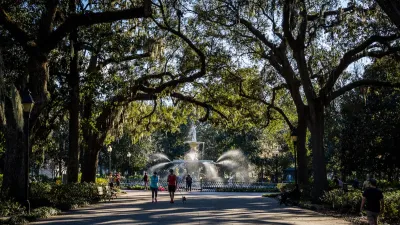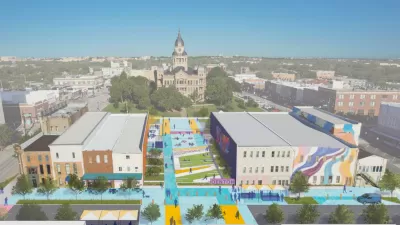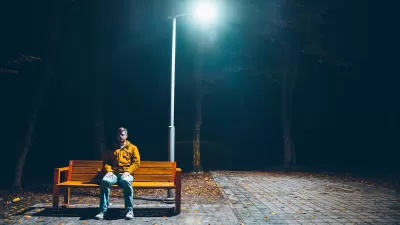With federal funding throw at homeland security over the last decade, architects and urban designers found an opportunity to develop great public spaces that are enjoyable as well as secure, writes Carol Strickland.
Early responses were crude, writes Strickland, as bollards and fences invaded public spaces. But as the decade wore on, designers found ways to take advantage of the security needs:
One sweet result of the bitter reality is the recommended 100-foot "standoff zone" between a new building and the curb (to keep bomb-laden vehicles at bay). The setback creates new public spaces, planted plazas for pedestrians. And while buildings themselves may be "hardened" with concrete cores, thick masonry walls, and wide stairways as escape routes, softer measures on the outside effectively accomplish the three D's of defense: detect, deter, and delay."
Strickland points to the National Museum of the American Indian on the Mall in Washington as an effective example.
FULL STORY: Designing for Disaster

Alabama: Trump Terminates Settlements for Black Communities Harmed By Raw Sewage
Trump deemed the landmark civil rights agreement “illegal DEI and environmental justice policy.”

Study: Maui’s Plan to Convert Vacation Rentals to Long-Term Housing Could Cause Nearly $1 Billion Economic Loss
The plan would reduce visitor accommodation by 25% resulting in 1,900 jobs lost.

Planetizen Federal Action Tracker
A weekly monitor of how Trump’s orders and actions are impacting planners and planning in America.

Wind Energy on the Rise Despite Federal Policy Reversal
The Trump administration is revoking federal support for renewable energy, but demand for new projects continues unabated.

Passengers Flock to Caltrain After Electrification
The new electric trains are running faster and more reliably, leading to strong ridership growth on the Bay Area rail system.

Texas Churches Rally Behind ‘Yes in God’s Back Yard’ Legislation
Religious leaders want the state to reduce zoning regulations to streamline leasing church-owned land to housing developers.
Urban Design for Planners 1: Software Tools
This six-course series explores essential urban design concepts using open source software and equips planners with the tools they need to participate fully in the urban design process.
Planning for Universal Design
Learn the tools for implementing Universal Design in planning regulations.
Caltrans
Smith Gee Studio
Institute for Housing and Urban Development Studies (IHS)
City of Grandview
Harvard GSD Executive Education
Toledo-Lucas County Plan Commissions
Salt Lake City
NYU Wagner Graduate School of Public Service





























